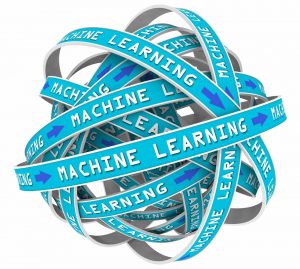Do you recall the era when mobile phones became popular? Soon after, we envisioned technology that would allow us to see the person with whom we were speaking.
We are now light years past achieving that vision, and advances in technology have now brought us to the age of Artificial Intelligence (AI), where a computer or robot can think and act as a human brain. Machine learning (MI) is a form of AI, defined by Stanford University as, “the science of getting computers to act without being explicitly programmed.”
Surprisingly, this technology has been in school curriculums since the late 1950s, and with continual advancements, interest has now piqued in the business sector. Speech recognition, successful web search, and the improved understanding of the human genome are just a few examples of current ML.
Questions to Ask Yourself
Before jumping in and incorporating machine learning into your organization, consider these questions.
- Is machine learning appropriate for the task I want to accomplish?
Do you want key statistical data or a predictive outcome? For example, if you’re seeking to discover which customer segment is purchasing a higher number of products, machine learning is not the right choice. If, however, you want to know the future buying power of that segment, machine learning would be the way to go.
- Is Your Data Ready for the Task?
It’s important to realize the need for perfectly formatted data to obtain the proper results. In fact, each project and model must have data specific to that model. To build predictive outcomes, the information you compile must span multiple years to determine particular trends.
Also, keep in mind that you must only work with complete datasets. For example, it would be impossible to do a prognostic model based on a person’s date of birth, if all of your records do not include that information. Thoroughly assess your data and be sure to set up data collection standards before moving ahead and building a model.
- What are Your Intentions for Follow-Up?
You do not want to invest time and money into a project that you will not monitor and maintain the data. Follow through is crucial to gain the highest benefit. Two ways to achieve this are to:
- Incorporate your model into the data processing pipeline so it can be automated. By doing this, you’ll obtain up-to-date results and generate the data you need.
- Keep the “Why am I doing this ML project?” in the back of your mind. Revisit your initial impetus. What are the results you initially wanted to achieve? Have you accomplished that goal? These answers will determine whether you are using the predictions for the right solution.
Machine learning is now mainstream in many businesses. It’s a great way to predict the future behavior of customers and analyze real-time data. To receive the most significant benefit, pre-think your strategy before you embrace this technology. Ask yourself the appropriate questions, make sure your dataset is complete with all required fields, and establish how to continue to get value from ML via an adequate follow-up process.
Stay tuned for Part 2 of this article, concerning the specific ways machine learning can aid your business now.





